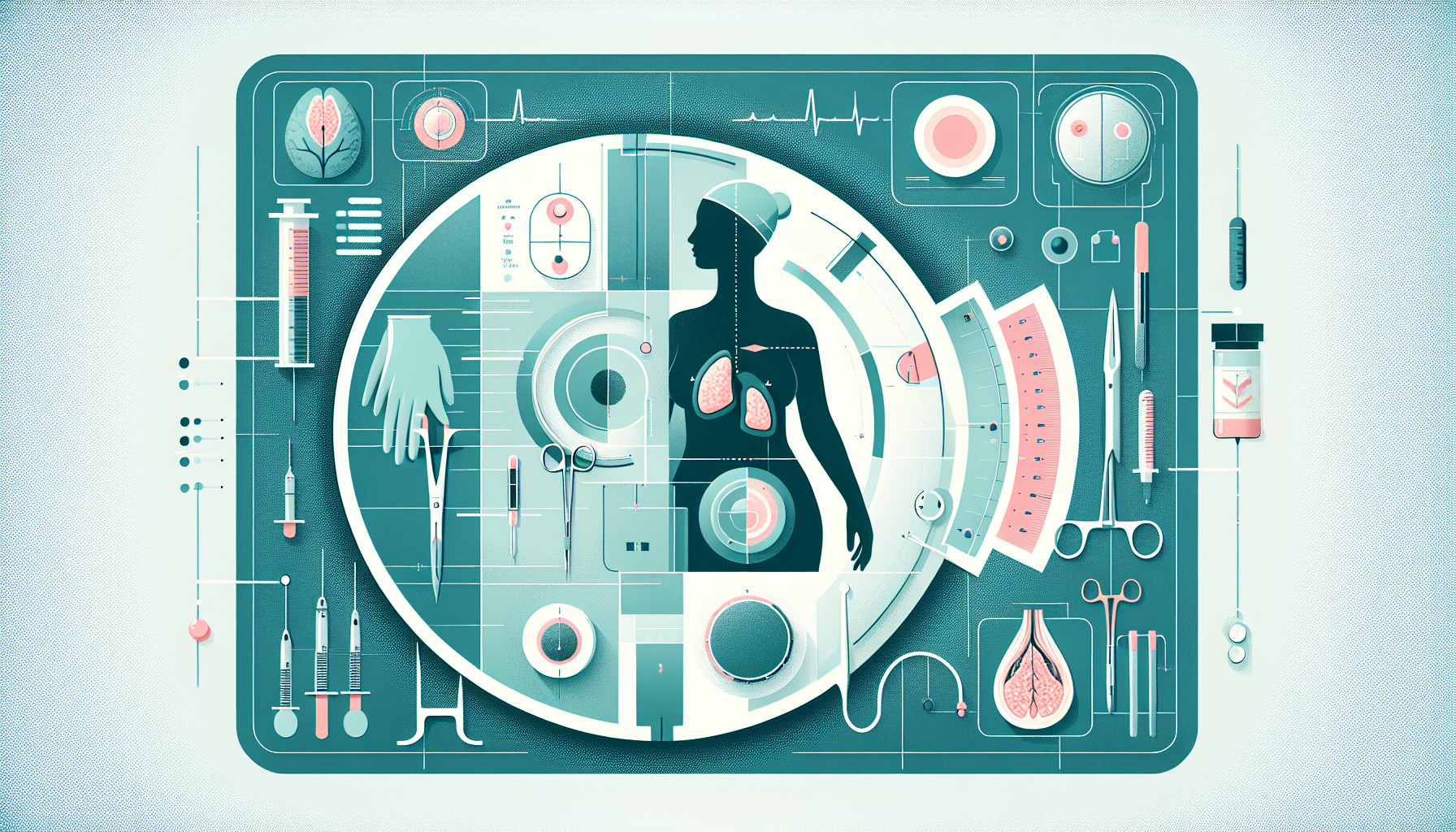Our Summary
This research paper discusses changes in the way breast reconstruction is done after mastectomy (breast removal surgery) in the US. The number of women choosing to have their healthy breast removed as a preventative measure has increased, leading to more surgeries using implants for reconstruction. However, using a woman’s own tissue for reconstruction has become less common due to its complexity and lower payment rates. As a result, these procedures are mainly performed at specialty centers. The paper also mentions that as more patients are treated with radiation, the best timing and method for reconstruction has become a subject of debate.
FAQs
- What factors have contributed to the increase in implant-based reconstructions after mastectomy in the US?
- What are the challenges faced by autologous reconstruction following mastectomy?
- How has the increase in patients receiving radiation affected the timing and method of post-mastectomy breast reconstruction?
Doctor’s Tip
A helpful tip a doctor might tell a patient about mastectomy is to discuss with their healthcare team the various options for breast reconstruction, including implant-based reconstruction and autologous reconstruction. It is important to consider factors such as the timing of reconstruction, the potential need for radiation therapy, and the expertise of the surgical team. Additionally, patients should be aware of the potential risks and benefits of each reconstruction option and make an informed decision that is best for their individual situation. Regular follow-up appointments and monitoring for any changes or complications after surgery are also important for overall health and well-being.
Suitable For
Patients who are recommended for mastectomy typically include those with:
Breast cancer: Patients with a diagnosis of breast cancer may undergo mastectomy as part of their treatment plan, either as a primary treatment or as a risk-reducing measure.
High risk of breast cancer: Patients with a strong family history of breast cancer or known genetic mutations (such as BRCA1 or BRCA2) that increase the risk of developing breast cancer may choose to undergo prophylactic mastectomy to reduce their risk.
Large or multiple tumors: Patients with large tumors or multiple tumors in the breast may be recommended for mastectomy to ensure complete removal of the cancerous tissue.
Previous radiation therapy: Patients who have previously undergone radiation therapy to the breast may have an increased risk of complications with breast-conserving surgery, making mastectomy a more suitable option.
Failed previous breast-conserving surgery: Patients who have had previous breast-conserving surgery that was unsuccessful in removing all of the cancerous tissue may be recommended for mastectomy as a more effective treatment option.
Personal preference: Some patients may choose mastectomy as a personal preference, either for cosmetic reasons or to reduce their risk of developing breast cancer in the future.
It is important for patients to discuss their individual risk factors and treatment options with their healthcare provider to determine the most appropriate course of action.
Timeline
Before mastectomy:
- Patient receives a breast cancer diagnosis and discusses treatment options with their healthcare provider
- Patient undergoes pre-operative evaluations and tests to determine the best course of action for their specific situation
- Patient may undergo genetic testing to assess their risk for future breast cancer
- Patient may meet with a plastic surgeon to discuss reconstruction options
After mastectomy:
- Patient undergoes mastectomy surgery to remove the affected breast tissue
- Patient may experience physical and emotional changes as a result of the surgery
- Patient begins the recovery process, which may include pain management and physical therapy
- Patient may undergo adjuvant treatments such as chemotherapy or radiation therapy
- Patient may choose to undergo breast reconstruction surgery to restore the appearance of the breast
- Patient continues to follow-up with their healthcare team for monitoring and ongoing care.
What to Ask Your Doctor
- What are the different types of mastectomy procedures available and which one would be most suitable for my individual case?
- What are the risks and potential complications associated with mastectomy surgery?
- What are the options for breast reconstruction following mastectomy?
- What is the recovery process like after mastectomy surgery?
- How will mastectomy surgery affect my physical appearance and body image?
- Will I need additional treatments such as radiation or chemotherapy after mastectomy surgery?
- What are the long-term effects and outcomes of mastectomy surgery?
- How often will I need to follow up with you after the mastectomy surgery?
- Are there any lifestyle changes or precautions I should take after mastectomy surgery?
- Can you provide me with information on support groups or resources for mastectomy patients?
Reference
Authors: Farhangkhoee H, Matros E, Disa J. Journal: J Surg Oncol. 2016 Jun;113(8):891-4. doi: 10.1002/jso.24201. Epub 2016 Feb 14. PMID: 26876921
